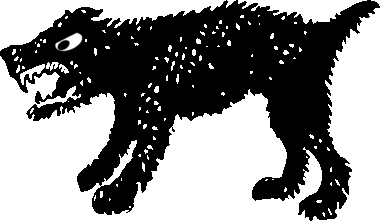Handling Fear-Based Aggression Safely
Fear-based aggression is a common issue in many dogs, and understanding the root causes is crucial for effective management. This type of aggression often stems from past trauma, lack of socialization, or a natural instinct to defend themselves. Recognizing triggers is paramount; these may include new people, loud noises, or unfamiliar environments. Addressing fear-based aggression requires a calm and knowledgeable approach. Owners must prioritize their dogs’ safety and that of others while working on behavior modification. Positive reinforcement training can be particularly beneficial, as it encourages desirable behaviors without resorting to punishment. To begin, create a safe space where the dog feels comfortable and secure. Gradually expose them to controlled situations that may trigger their aggression, monitoring their reactions closely. Keep sessions short and positive, rewarding calm behavior consistently. Employ non-confrontational body language to prevent increasing their anxiety or fear. It’s also beneficial to consult a professional dog trainer or a behaviorist who specializes in aggression. They can provide tailored strategies to help manage fear-based aggression effectively, ensuring the dog’s well-being and helping them learn to cope with their fears.
In addition to training, using tools like muzzles or head halters may be necessary during the rehabilitation process. These tools should be introduced gradually to ensure the dog associates them with positive experiences. Building trust takes time, and patience is crucial in this journey. It’s important for owners to educate themselves about canine body language, as recognizing signs of stress or fear can help mitigate aggressive episodes. By closely observing their dog, they can intervene before aggressive behaviors escalate. This proactive approach fosters a safer environment for both the dog and others around them. Group classes with controlled settings can also be advantageous, allowing dogs to interact with peers under professional supervision. Learning to socialize safely in these environments helps dogs build confidence and reduce fear. Additionally, it can provide opportunities for owners to share experiences and learn from each other. Support from fellow dog owners can be invaluable, offering practical tips and encouragement. It’s important to celebrate small victories throughout the training process, as each step forward significantly impacts the dog’s overall behavior and mental well-being.
Creating a Safe Home Environment
Creating a safe home environment is essential for managing fear-based aggression. Ensure that your home is free from objects that may induce fear, such as loud toys or decorations that might startle the dog. Designate a quiet area where the dog can retreat when feeling overwhelmed. This sanctuary should contain familiar items like their bed and favorite toys, creating a sense of security. Behavioral training should complement environmental adjustments. Encourage a predictable routine to help build the dog’s confidence. Regular exercise, including walks and playtime, can significantly impact a dog’s mood and behavior. A well-exercised dog is often calmer and less prone to aggression. Use positive reinforcement techniques, rewarding good behavior consistently. When the dog remains calm in situations that typically trigger fear, offer treats or praise. This method reinforces their ability to cope and reduces aggression over time. Education is also vital; owners should stay informed about dog behavior and training techniques. Attend workshops or read books that focus on fear-based aggression to expand your understanding. Being proactive and educated fosters a more harmonious relationship between the dog and its owner.
Incorporating tools and commands into your training strategy can further improve outcomes. Basic commands like “sit” or “stay” can redirect attention during stressful situations. Using a clicker can also mark moments of positive behavior effectively when reinforcing desired actions. Gradually introduce your dog to various stimuli that cause fear while rewarding them for calm behavior. If your dog reacts aggressively to specific stimuli, reduce their exposure and take several steps back in training. Slow, systematic desensitization is key to helping the dog reframe their perception of threatening situations. Avoid reprimanding aggressive behaviors, as this can worsen fear and reinforce a cycle of anxiety. Instead, focus on redirecting the dog’s attention and rewarding positive actions. Consistency is essential; all family members should be on board with the training approach to avoid confusion for the dog. Keep in mind that overcoming fear-based aggression can be a lengthy process. Therefore, realistic expectations are critical. Celebrate small successes, and remember setbacks are a normal part of the journey. Your commitment and understanding will help strengthen the bond between you and your dog.
Seeking Professional Help When Needed
Sometimes, fear-based aggression may require professional intervention to develop effective strategies tailored to your dog’s specific needs. A qualified dog trainer or animal behaviorist can conduct an assessment to identify specific triggers and create a detailed training plan. They can teach you techniques to manage your dog’s behavior more effectively. In particular situations, consider group therapy sessions where dogs can learn to socialize under controlled circumstances. In such sessions, professionals can provide real-time feedback to owners and help guide interactions. Moreover, owners should be open to feedback and willing to make adjustments based on expert advice. Daily consistency is also necessary to maintain progress. Keep a journal to track behaviors and training successes, which can help you and the professional measure improvements over time. Counting on a trained expert goes a long way to ensure everyone remains safe and the dog’s quality of life improves significantly. Professional help is not a sign of failure but a proactive step towards a more manageable and happy life with your pet.
Maintaining a positive mindset throughout the training process is vital. Acknowledging both progress and challenges allows you to remain motivated. Surrounding your dog with positive experiences can make a remarkable difference in their behavior over time. Regularly revisiting techniques and reinforcing learning also helps establish a strong foundation for more stable behavior. Owners should also participate in community workshops that focus on dog training and socialization. Meeting other dog owners and sharing experiences creates supportive connections. The journey toward managing fear-based aggression is nuanced and often requires ongoing learning. Regular follow-ups with trainers help to refine techniques and address emerging behavioral concerns. Continuing education can also provide insights into dealing with unexpected challenges that may arise. Don’t hesitate to seek additional resources, including literature and online platforms, that cater specifically to aggressive behavior. Engaging with communities dedicated to dog training also offers diverse perspectives and strategies that might be beneficial. Tools such as online forums or local meetups enable owners to share knowledge, experiences, and advice, fostering a broader understanding of effective approaches.
Building a Long-term Positive Relationship
Building a long-term positive relationship with your dog hinges on understanding their emotions and responding to them effectively. This relationship requires patience and willpower from both the owner and the dog. It is crucial to respect your dog’s pace during the training and acclimatization process. Each dog has a unique history, which will inform how they respond to different stimuli. Consistently applying the strategies learned in training helps to fortify this relationship. Take time to engage in activities that your dog enjoys, such as play or outdoor adventures. Positive interactions can significantly enhance the trust and bond between you both. Keeping sessions short and fun will allow your dog to associate training with enjoyable outcomes. Familiarize your dog with their triggers in a safe, controlled manner, always preparing to reward calm behavior. Effective communication is also vital. Developing a shared understanding through body language reinforces your interactions, making it easier for your dog to feel safe and confident. Ultimately, investing time and effort into understanding and training your dog pays dividends in long-term companionship and companionship.
In conclusion, handling fear-based aggression safely requires a comprehensive approach blending training, environmental safety, and professional support. Understanding your dog’s perspective will guide your training efforts effectively. Acknowledging their fears and providing a safe atmosphere is the foundation for progress. Establish a routine that fosters comfort and predictability. Gradually face fears in controlled situations, reinforcing positive behaviors with rewards. Incorporate tools like muzzles or halters, if needed, to ensure safety while training. Education and professional advice are pivotal, as is cultivating a sense of community among fellow dog owners. Ongoing loyalty to the training process, adaptability to changing circumstances, and open communication will pave the way for better-managed behaviors. Building trust takes time, but over time, with patience and love, meaningful improvements can occur. Encourage a culture of ongoing learning and cooperation, ensuring that support remains a central theme in your dog training experience. Celebrate achievements, however small, and remember, creating a lasting bond built on respect is the ultimate goal. With persistence and implementation of effective strategies, you can foster a happier, healthier companionship with your dog.





